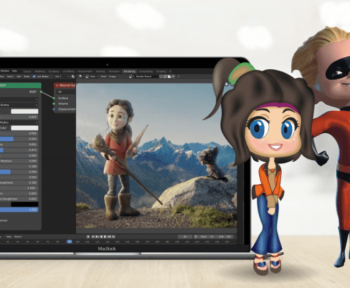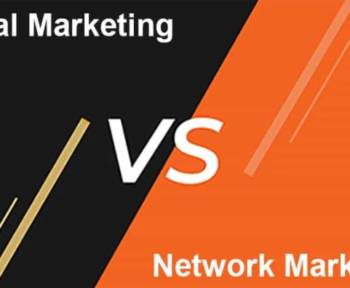The new year 2023 has come, and 2022 has been a successful and profitable year for German sportswear firm Adidas so far. The brand’s net profit for the second quarter increased by 20% and exceeded analysts’ expectations. Adidas’ simple digital marketing strategy is the power behind this success.
With this strategy well implemented, the company wants to overthrow its main competitor, Nike, according to what our friends at Digital Agency Network tell us. The brand’s e-commerce channel is the fastest-growing revenue channel and all production processes are as digitized as possible. Changing consumer behaviors with digital transformation also means changing the way Adidas works. Technology helps the company to build more direct relationships with its customers. But let’s see point by point what you should know.
Table of Contents
Adidas Brief History
Adidas is a world leader in the sporting goods industry, offering a wide range of clothing, footwear, and equipment. Today sportswear has gone from the gym to all facets of life. With a focus on comfort and performance, their styles support the more casual lifestyle of today’s consumers. Athletic-influenced styles are clearly not just for athletes anymore, they are for everyday people at work, play, and play. Adidas has managed to capitalize on this phenomenon in a big way, with brand recognition built on innovation with styles and athletic trends.
Since being established in Germany in 1949 by founder Adolf Dassler, Adidas has become synonymous with the sports industry. Today, Adidas is a global public company and is one of the largest sports brands in the world. It is a family brand with its three-stripe logo recognized in markets around the world. The company’s product portfolio is vast, ranging from state-of-the-art sports footwear and apparel to accessories such as bags, watches, eyewear, and other sports-related items and equipment. With more than 46,000 employees worldwide, the Adidas Group consists of around 170 subsidiaries, including Reebok, TaylorMade-Adidas Golf, Rockport, and CCM-Hockey.
Adidas Marketing Strategy the Case Study (Impossible is Nothing)
A leader in the sportswear industry since its inception more than 90 years ago, Adidas has always been associated with performance – performance on the field, in the gym, and on the courts. Adidas’ performance also shines in a little-known area: its incredible data-driven culture. Adidas uses the power of data to inform its business decisions and drive verifiable results.
Adidas (impossible is nothing), as the leader in apparel, footwear, and sportswear, is revolutionizing manufacturing and retail with a variety of custom designs and a digital approach as a marketing strategy that puts consumers at the center of strategy as a fundamental part of everything the company does. company. performs in its value-generation processes.
digital and technology
Adidas’ five-year strategy that aired in 2015 is called “Creating the New,” as noted on Digital Agency Network. Describing itself as a digital company, Adidas wants to be the best sportswear brand in the world. To achieve this goal, what tools do you use? Digitization stands out as a key point in Adidas’ current marketing strategy.
The term “the best” is the process he carries out to design, build and sell the best sporting goods in the world. In direct competition, yes, with a rival as strong as Nike. In this, it is highlighted in the original article, Adidas spends 90% of its marketing budget on digital campaigns and on social networks.
Speed
Secondly, it is necessary to emphasize the purpose of Adidas in manufacturing at high speed. Because this is one of the essential parts of Adida’s digital marketing strategy. How have you managed to manufacture faster than in the past? As noted in the article on which we based this article, the company digitized the production process with 3D printing technology and robotics at the Speedfactory in Ansbach. An example of Adidas shoes made with 3D printing is the Futurecraft 4D shoes, Made with Light and Oxygen is a successful example of the advanced technology of the sports brand founded by Adolf Dassler.
“The objective of the manufacturing process is to offer the most innovative and personalized sports shoes for each athlete. Sporting goods brand always tries to meet the high demand. Created with innovation and collaboration, fresh and desirable products are always ready for customers wherever and whenever they want them to shop,” explains the Digital Agency Network article.
Relationship with consumers

What would a company be without its relationship with consumers? Really, and more in these times with increasingly active and demanding consumers, nothing. In this sense, Adidas they try to interact with its customers and create “premium, connected, and personalized experiences”. Or put another way, as the original source points out, “create enthusiasm for the sport on a personal level.”
As it does? Adidas’ digital strategy encompasses taking on all touchpoints (mobile, social or retail devices) with which consumers interact. And from them, it provides “a consistent experience.” In addition, regarding the use of digital analysis and big data or Big Data, the article explains that Adidas “tries to be in all the places where its consumers are. Adidas promises to deliver multi-channel, unified, and also unique experiences.
He also recalls Engine Digital’s collaboration with the Adidas Digital Future Team “to serve the needs of Run Genie’s other audience, which is Adidas’ sales associate. What was there to do? Define an “end-to-end customer experience for the sales team to guide the purchase decision “through data visualization and connected hardware”.
Open Source Innovations and Collaborations
We continue with the digital marketing strategy of Adidas, in this section with news and open source collaborations. What does Digital Agency Network tell us about it? Well, as the great sports brand that it is, Adidas reaches out to collaborators of all kinds, including creatives, athletes, consumers, and partners. For what purpose? That of “learning, creating, sharing and shaping the sports and sports culture of the future”, as well as “trying to bring great products to the market”. At this point, he recalls the cooperation with Parley for de Ocean, which was based on the production of three new UltraBoost models designed with plastic waste from the sea.
As for sports marketing, Adidas, as everyone knows, maintains collaborations with soccer players and athletes. Also, on the other hand, with singers, one example was the campaign ‘Calling all creators, the work of 72AndSunny.
Strategic cities
In the section on location and its importance in Adidas marketing, as Digital Agency Network points out, there are six cities (London, Los Angeles, New York, Paris, Shanghai, and Tokyo) that shape the perception, trends and purchasing decisions of consumers are strategic. importance for Adidas and its digital marketing. «In Europe, they focus on selling soccer products above all, but the United States is a key country for other subsidiaries such as basketball and baseball. North America is the largest market in the sporting goods industry and its total share is 40%”, he explains.
Value proposal
Adidas offers three main value propositions: innovation, personalization, and brand/status. The company places a high priority on innovation.
The brand
The Adidas trefoil logo was incorporated as a corporate image in 1972, and this represents the heritage and history of the brand since 1996, this is how the trefoil is used only in classic products of the brand. In the year of 1996, the three bars of Adidas will become the corporate logo of Adidas worldwide, this trademark has become synonymous with this great Adidas brand and its dedication to producing high-quality products for athletes, currently, This logo is used throughout the company’s public image throughout the world.
Strategy
With sports playing an increasingly important role in the lives of more and more people, both on and off the pitch, they operate in a highly attractive industry. Drawing on a deep understanding of consumers and the authenticity of the Adidas brand, pushing the boundaries of products, experiences, and services.
The axes of the strategy are:
- Deep customer knowledge
- Brand differentiation and authenticity
- Permanent innovation, pushing products to the limit
- Generation of brand experiences
- Quality in the service
- Technology and digital transformation
Other Reads
Puma Marketing Strategy: The Case Study
Pepsi Marketing Strategy: The Case Study
Nike Marketing Strategy: The Case Study (Just Do It)
McDonald’s marketing strategy: A benchmark in the fast food industry






2 Comments
alanya escort
I like the efforts you have put in this, regards for all the great content.